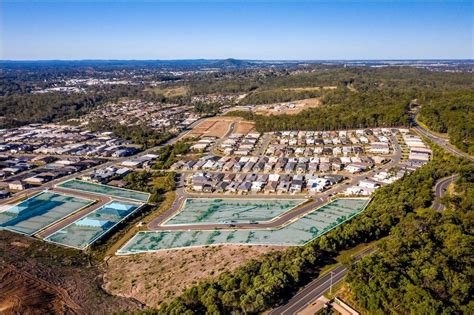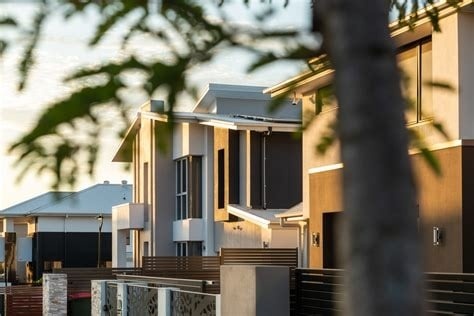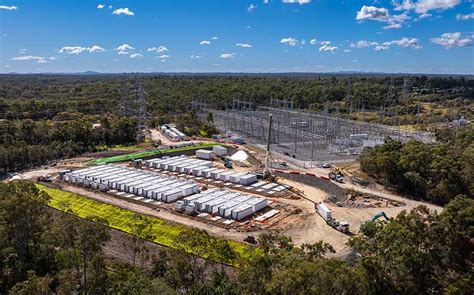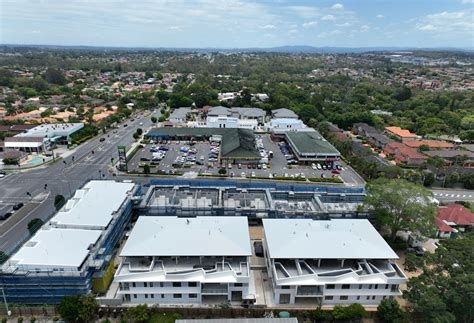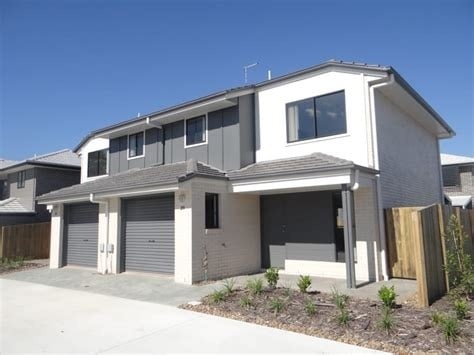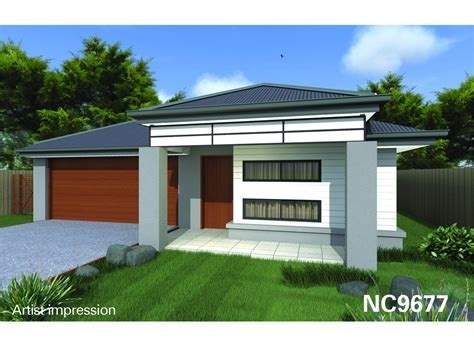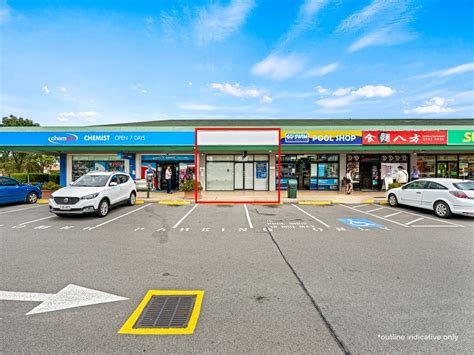Chart Color Schemes
est. as @ -- *
ABS ERP | -- people | --
2021 Census | -- people
Sales Activity
Curious about local property values? Filter the chart to assess the volume and appreciation (including resales) trends and regional comparisons, or scroll to the map below view this information at an individual property level.
Find a Recent Sale
Sales Detail
Population
Population growth drivers in Kuraby are strong compared to national averages based on AreaSearch's ranking of recent, and medium to long-term trends
Kuraby's population is 9,408 as of August 2025. This reflects an increase from 9,025 people in the 2021 Census, a rise of 383 individuals (4.2%). The estimated resident population was 9,402 in June 2024, with an additional 54 validated new addresses since the Census date accounting for this growth. This results in a density ratio of 2,027 persons per square kilometer, higher than national averages assessed by AreaSearch. Over ten years (2015-2025), Kuraby's population grew at a compound annual rate of 1.0%, outpacing its SA3 area. Overseas migration contributed approximately 76.8% of recent population gains.
AreaSearch uses ABS/Geoscience Australia projections for each SA2 area, released in 2024 with a base year of 2022. For areas not covered and years post-2032, Queensland State Government's SA2 area projections from 2023 (based on 2021 data) are adopted, applying proportional growth weightings for age cohorts in line with ABS Greater Capital Region projections released in 2023. Future lower quartile national population growth is expected, with Kuraby projected to grow by 221 persons to 2041, an increase of 2.3% over 17 years.
Frequently Asked Questions - Population
Development
Residential development activity is lower than average in Kuraby according to AreaSearch's national comparison of local real estate markets
Kuraby has granted approximately 32 residential approvals annually. The Australian Bureau of Statistics produces development approval data on a financial year basis: 160 homes over the past five years from FY-20 to FY-25, and one so far in FY-26. On average, around 5.8 new residents have arrived per dwelling constructed each year between FY-20 and FY-25. This supply lagging demand suggests heightened buyer competition and pricing pressures, with new homes being built at an average expected construction cost of $633,000.
Commercial approvals this financial year totalled $9.8 million, indicating moderate commercial development activity. Compared to Greater Brisbane, Kuraby has significantly less development activity, 55.0% below the regional average per person. This constrained new construction typically reinforces demand and pricing for existing dwellings, which is also below national averages, reflecting the area's maturity and possible planning constraints. Recent development has been entirely detached dwellings, sustaining Kuraby's suburban identity with a concentration of family homes suited to buyers seeking space. Developers are constructing more detached housing than the existing pattern implies (83.0% at Census), suggesting persistent strong demand for family homes.
With around 737 people per dwelling approval, Kuraby reflects a highly mature market. Population forecasts indicate Kuraby will gain 215 residents by 2041. With current construction levels, housing supply should adequately meet demand, creating favourable conditions for buyers while potentially enabling growth that exceeds current forecasts.
Frequently Asked Questions - Development
Infrastructure
Kuraby has strong levels of nearby infrastructure activity, ranking in the top 40% nationally
Changes in local infrastructure significantly affect an area's performance. AreaSearch has identified 19 projects that could impact this region. Notable ones include Brisbane Metro, Logan Plan, Pacific Motorway M1 Upgrade from Eight Mile Plains to Daisy Hill, and Brisbane Metro extending from Eight Mile Plains to Roma Street. The following list highlights those most relevant.
Professional plan users can use the search below to filter and access additional projects.
INFRASTRUCTURE SEARCH
Frequently Asked Questions - Infrastructure
Brisbane Metro
High-frequency bus rapid transit system along 21km of existing busway between Eight Mile Plains and Royal Brisbane and Women's Hospital, featuring 60 electric bi-articulated metro vehicles with capacity for 150 passengers each. Two routes: M1 (Eight Mile Plains to Roma Street) and M2 (RBWH to UQ Lakes). Includes central maintenance and storage depot at Rochedale, new Adelaide Street tunnel, and upgraded stations. A $1.6 billion investment replacing routes 111 and 160, with M2 service launched January 28, 2025 and M1 service launched June 30, 2025.
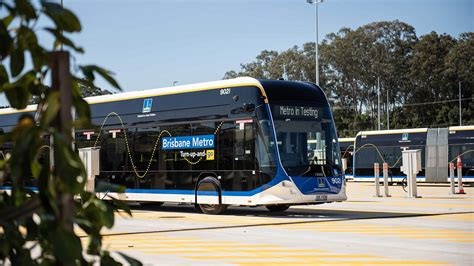
Logan Plan
Logan City Council is preparing a new planning scheme, the Logan Plan, to guide growth, housing, jobs and infrastructure across the City of Logan. The draft plan completed State Interest Review in June 2025 and is proceeding to a nine-week public consultation from 1 September to 31 October 2025, with adoption and commencement targeted from 2026 onwards.
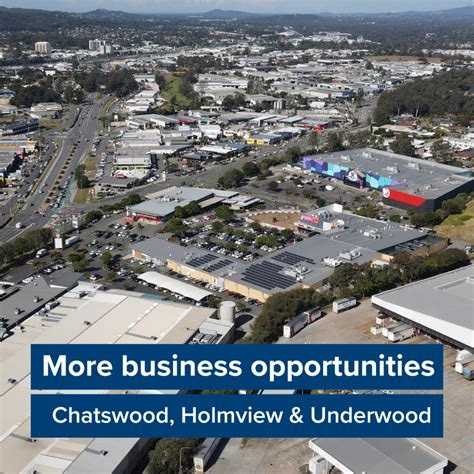
Pacific Motorway M1 Upgrade - Eight Mile Plains to Daisy Hill
$750 million upgrade of 8km section of Pacific Motorway M1 from Eight Mile Plains to Daisy Hill including widening to up to 5 northbound lanes between Gateway Motorway and Watland Street, extending the South East Busway from Eight Mile Plains to Springwood with new Rochedale bus station and park 'n' ride facility, completing V1 Veloway cycleway link, and delivering improved interchanges and smart motorway technologies. Part of broader M1 upgrade program delivering better connectivity for Logan and Gold Coast regions.
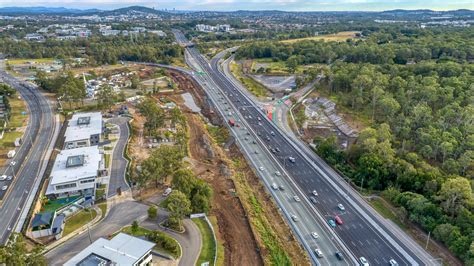
Brisbane Metro - Eight Mile Plains to Roma Street
High-frequency metro network across 21km of existing busway connecting Eight Mile Plains to Roma Street and RBWH to UQ Lakes. Features 60 electric metro vehicles with 150 passenger capacity each.
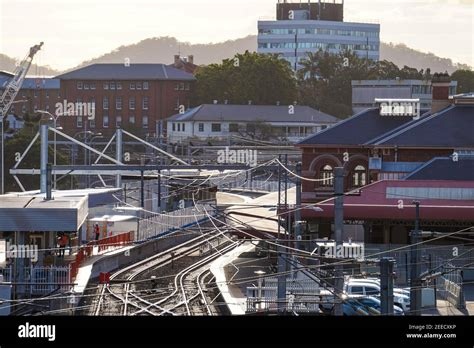
South East Busway extension to Springwood
Extension of the South East Busway from Eight Mile Plains to Springwood, including the new Rochedale station and Springwood terminal, delivered as part of the Pacific Motorway (M1) Eight Mile Plains to Daisy Hill Upgrade. The extension opened to passengers in May 2025, improving public transport connectivity across Brisbane's southside and Logan.
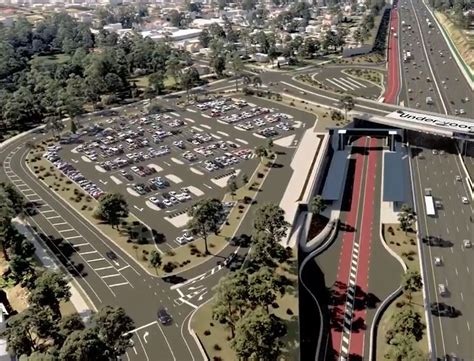
Pacific Motorway (M1) Upgrade - Daisy Hill to Logan Motorway
Multi-billion dollar upgrade widening 10km between Daisy Hill and Logan Motorway, extending South East Busway to Mandew Street with new bus stations at Chatswood Road, Loganlea Road and Beenleigh-Redland Bay Road.
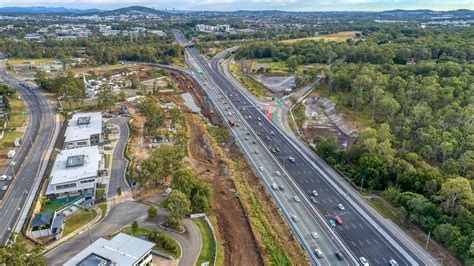
Runcorn State School Facilities Upgrade
The school is currently undergoing continual facilities upgrades including a brand new building for the prep year, upgrading computer lab facilities, air-conditioning of the library, and effective water usage strategies with tanks and fittings.
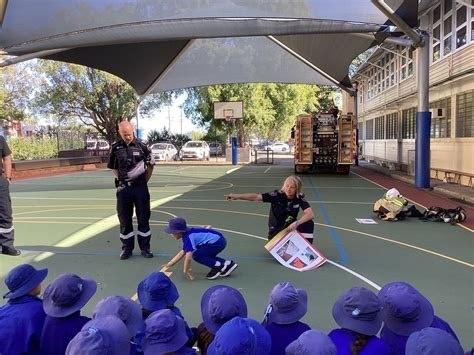
Logan River Flood Mitigation Project
Comprehensive flood mitigation infrastructure including upgraded drainage systems, detention basins, improved levees, and early warning systems. Designed to protect residential and commercial areas from 1-in-100-year flood events.
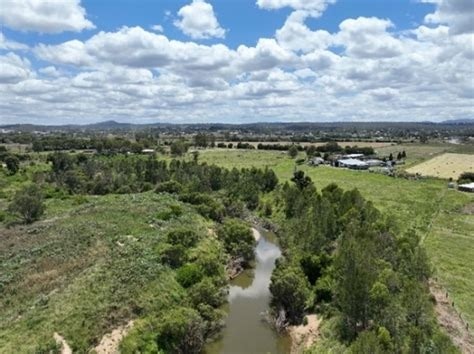
Employment
Kuraby has seen below average employment performance when compared to national benchmarks
Kuraby has an educated workforce with strong representation in essential services sectors, an unemployment rate of 4.4%, and estimated employment growth of 1.9% over the past year as of June 2025. The area has 4,604 residents employed, with an unemployment rate 0.4% higher than Greater Brisbane's rate of 4.1%.
Workforce participation in Kuraby is lower at 61.9%, compared to Greater Brisbane's 64.5%. Key employment sectors among residents include health care & social assistance, education & training, and retail trade, while construction has limited presence at 6.3% compared to the regional average of 9.0%. The residential area appears to offer limited local employment opportunities.
Over a 12-month period ending June 2025, employment increased by 1.9%, matching labour force growth, keeping unemployment broadly flat. In comparison, Greater Brisbane saw employment grow by 4.4% and unemployment fall by 0.4 percentage points. State-level data from Sep-25 shows Queensland's employment contracted by 0.23%, with an unemployment rate of 4.2%. Nationally, the unemployment rate was 4.5% with employment growth of 0.26%. Jobs and Skills Australia forecasts national employment growth of 6.6% over five years and 13.7% over ten years. Applying these projections to Kuraby's employment mix suggests local growth could be approximately 6.8% over five years and 14.1% over ten years, though these are simple extrapolations for illustrative purposes only.
Frequently Asked Questions - Employment
Income
Income levels align closely with national averages, indicating typical economic conditions for Australian communities according to AreaSearch analysis
Kuraby had a median taxpayer income of $47,456 and an average of $62,242 according to postcode level ATO data aggregated by AreaSearch for the financial year 2022. This was below the national average, contrasting with Greater Brisbane's median income of $55,645 and average income of $70,520. Based on Wage Price Index growth of 11.71% from financial year 2022 to March 2025, current estimates would be approximately $53,013 (median) and $69,531 (average). According to Census 2021 income data, household income ranked at the 71st percentile ($2,079 weekly), while personal income was at the 34th percentile. The largest segment comprised 35.2% earning $1,500 - 2,999 weekly (3,311 residents). Housing accounted for 14.2% of income, with strong earnings placing residents within the 74th percentile for disposable income. The area's SEIFA income ranking placed it in the 7th decile.
Frequently Asked Questions - Income
Housing
Kuraby is characterized by a predominantly suburban housing profile, with above-average rates of outright home ownership
The dwelling structure in Kuraby, as per the latest Census evaluation, consisted of 82.9% houses and 17.0% other dwellings (semi-detached, apartments, 'other' dwellings), compared to Brisbane metro's 82.9% houses and 17.1% other dwellings. The home ownership level in Kuraby was 34.7%, with the rest being mortgaged at 40.3% or rented at 25.0%. The median monthly mortgage repayment in Kuraby was $2,100, exceeding Brisbane metro's average of $1,800. The median weekly rent figure in Kuraby was recorded at $400, matching Brisbane metro's figure. Nationally, Kuraby's mortgage repayments were significantly higher than the Australian average of $1,863, while rents exceeded the national figure of $375.
Frequently Asked Questions - Housing
Household Composition
Kuraby features high concentrations of family households, with a higher-than-average median household size
Family households constitute 85.1% of all households, including 51.1% couples with children, 23.2% couples without children, and 9.7% single parent families. Non-family households make up the remaining 14.9%, with lone person households at 12.3% and group households comprising 2.7%. The median household size is 3.2 people, larger than the Greater Brisbane average of 3.0.
Frequently Asked Questions - Households
Local Schools & Education
Kuraby performs slightly above the national average for education, showing competitive qualification levels and steady academic outcomes
In Kuraby, the educational attainment significantly exceeds broader standards. Among residents aged 15 and above, 39.8% possess university qualifications compared to 25.7% in Queensland and 30.4% nationally. Bachelor degrees are the most prevalent at 26.3%, followed by postgraduate qualifications (11.1%) and graduate diplomas (2.4%). Vocational credentials are also prominent, with 25.2% of residents aged 15 and above holding such qualifications - advanced diplomas at 10.9% and certificates at 14.3%.
Educational participation is notably high, with 34.8% of residents currently enrolled in formal education. This includes 11.9% in primary education, 9.8% in secondary education, and 6.7% pursuing tertiary education. Kuraby State School and Kuraby Special School collectively serve 419 students, with typical Australian school conditions (ICSEA: 1008) offering balanced educational opportunities. The educational mix includes one primary and one K-12 school. Local school capacity is limited at 4.5 places per 100 residents compared to the regional average of 13.1, leading many families to travel for schooling.
Frequently Asked Questions - Education
Schools Detail
Nearby Services & Amenities
Transport
Transport servicing is moderate compared to other areas nationally based on assessment of service frequency, route connectivity and accessibility
Transport analysis shows 24 active stops operating within Kuraby, consisting of a mix of train and bus services. These stops are served by 23 individual routes, collectively offering 1,409 weekly passenger trips. Transport accessibility is rated as good, with residents typically located 275 meters from the nearest stop.
Service frequency averages 201 trips per day across all routes, equating to approximately 58 weekly trips per stop.
Frequently Asked Questions - Transport
Transport Stops Detail
Health
Kuraby's residents boast exceedingly positive health performance metrics with younger cohorts in particular seeing very low prevalence of common health conditions
Kuraby's health outcomes data shows excellent results, with younger cohorts having notably low prevalence of common health conditions. As of approximately mid-2021, about 51% (~4,807 people) had private health cover, compared to Greater Brisbane's 48.4%.
The most prevalent medical conditions were asthma (5.9%) and arthritis (5.5%), with 77.2% reporting no medical ailments, similar to Greater Brisbane's 77.0%. As of 2021, Kuraby had 13.7% (1,287 people) aged 65 and over, slightly lower than Greater Brisbane's 15.5%.
Frequently Asked Questions - Health
Cultural Diversity
Kuraby is among the most culturally diverse areas in the country based on AreaSearch assessment of a range of language and cultural background related metrics
Kuraby has one of the highest levels of cultural diversity in Australia, with 55.6% of its residents speaking a language other than English at home and 52.5% being born overseas. The predominant religion in Kuraby is Islam, which accounts for 32.6% of the population, significantly higher than the 10.0% average across Greater Brisbane. In terms of ancestry, the top three groups in Kuraby are Other (27.4%), Chinese (13.4%), and English (13.2%).
Notably, South African ancestry is overrepresented at 1.6%, compared to the regional average of 0.5%. Indian ancestry also stands out at 10.0% versus the regional average of 5.4%, as does Korean ancestry at 2.2%, despite being slightly below the regional average of 2.9%.
Frequently Asked Questions - Diversity
Age
Kuraby's population is younger than the national pattern
Kuraby's median age is 35 years, nearly matching Greater Brisbane's average of 36. This is somewhat younger than Australia's median age of 38 years. Compared to Greater Brisbane, Kuraby has a higher concentration of residents aged 5-14 (15.9%) but fewer residents aged 25-34 (11.8%). Between the 2021 Census and the present day, the population aged 15-24 has grown from 13.9% to 15.3%. Conversely, the population aged 25-34 has declined from 13.1% to 11.8%. By the year 2041, Kuraby's demographic is projected to change significantly. The cohort aged 85 and above is expected to grow by 130%, adding 256 residents to reach a total of 453. Residents aged 65 and above will drive 59% of population growth, indicating a trend towards demographic aging. Conversely, populations in the age groups 0-4 and 5-14 are projected to decline.
